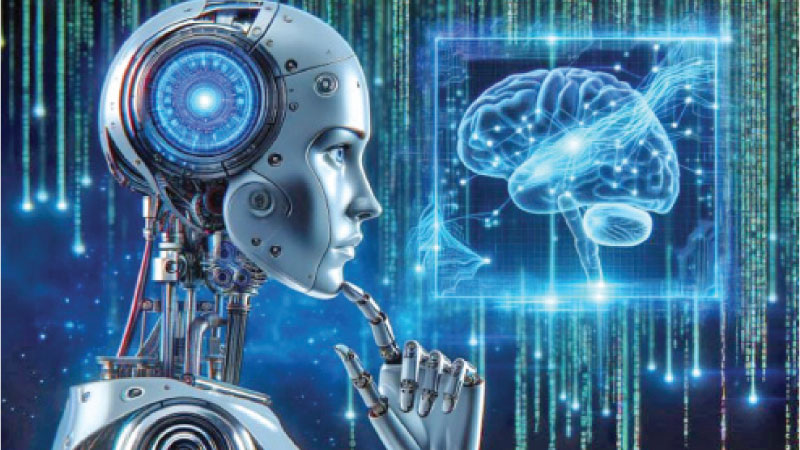 The role of Artificial Intelligence (AI) and robots in the future Sri Lankan economy has not been properly analysed, but it may be a subject for more than one article due to the vast scope of the issues involved. We could, however, make a start by taking a look at how other countries have made adjustments to the new economy that is transforming fast due to AI and robot-aided technology.
The role of Artificial Intelligence (AI) and robots in the future Sri Lankan economy has not been properly analysed, but it may be a subject for more than one article due to the vast scope of the issues involved. We could, however, make a start by taking a look at how other countries have made adjustments to the new economy that is transforming fast due to AI and robot-aided technology.
In China, they say that some factories are so robot-tech intensive that there are no lights on in the factories most of the time, as the robots doing some of the repetitive and non-repetitive tasks do not need lights. China is, anyway, a particularly tech-intensive culture these days. In some ways, Chinese tech-innovation at least as it relates to ordinary lives, is much greater than in the U.S., or other advanced industrialised nations such as Germany or Japan, for instance.
Paper money is hardly used in China these days and everyone from the Company CEO to the humble street vendor uses digital technology to transact. In other words, they use their phones to scan a QR code for payment, and do not use cash. But this is just the tip of the tech-iceberg. The Chinese use technology in a myriad ways, making construction easier, or, among other things, creating all types of visual effects in malls and various other everyday spaces.
hi-tech
Their use of hi-tech to power bullet trains for long distance transport, is legendary. But the people in China are still for the most part steeped in old world culture and traditional ways of living. So, this makes for a delightful country that mixes old world charm with hi-tech. Factories without lights, because robots are being deployed, is the high-end in this robust engagement with technology.
But China apparently has one of the fastest rates currently, of deploying robots in place of human hands in various manufacturing settings. Does that mean that China’s vast Human Resources are moving towards redundancy fast?
That would be something to behold with a country that has a population of over one billion people. Would the gentle Chinese rebel against hi-tech and demand for a reversal of gains made through technological innovation?
That is extremely unlikely, but China could be a test case in which the world can study the impacts of AI, and the technology of robotics on industry and the economy and social life at large. Not only is the country very receptive to technology, innovation in China is so unique that you could say the trend is one of a kind.
What you’d find in China is the type of robust and sometimes quirky type of genius that is not seen in the West. The way the Chinese build bridges and various causeways over vast bodies of water, or build entire islands in still larger bodies of water, is often a testament to their ingenious ways of adapting modern-technology to a myriad of innovative uses.
Those who often visit social media platforms such as Tik-Tok would have seen how these systems work. The Chinese are masters at using pre-fabricated materials and moving these building blocks in innovative ways to construct bridges and other structures.
So, it would be correct to say that the Chinese are in love with modern technology including robotics, and that traditional ways of life which most Chinese are wedded to are no impediment to the progress of such technologies.
But would it be different if people suddenly start losing jobs en masse to robotics and AI? The indications so far are that the Chinese would transition from using humans for every task in factory settings, to robotics at a mass scale, without a glitch. China is among the top-three countries that are the fastest in replacing humans with robots, as stated earlier in this article. But there is no indication whatsoever that this trend is creating joblessness or mass redundancies in the workforce.
According to some estimates, around 77 percent of the Chinese workforce could be replaced by robots in the near future. This shows the scale of progress, and how drastic the changes that are taking place. But China has so far been excellent at seamlessly absorbing this replaced workforce into other areas of work such as biodiversity projects.
The Chinese have also been experts at re-skilling workers so that they would learn how to service the new technologies such as AI and robotics.
The Chinese example in this regard, which is a very valid one because the country has such a massive population and workforce, makes clear that AI and robotics does not have to make a workforce redundant. However, as far as certain workers are concerned, such as those who are approaching the fag end of their careers, the Chinese Government has also offered the option of early retirement and the chances of living a comfortable life upon such furlough, either due to a State-aided pension or some type of investment scheme for early retirees.
The fact is that whatever the solution may be — re-skilling workers, moving them to different areas such as biodiversity related work, or allowing workers to opt out of the workforce altogether — the Chinese have made sure that the robotics and AI revolution does not create unemployment and unmanageable redundancy.
anxiety
That’s all that is needed. The current wave of anxiety over AI replacing humans is akin to the Luddite scare in the industrialised age, when certain movements acquired momentum on the premise that machinery in factories would replace humans and create mass unemployment.
Today, that anyone even thought that machines, meaning ordinary factory-technology, would make people redundant sounds ludicrous. With AI and robotics, the changes are coming so fast, however, that the world could appreciate the head start that countries such as China are giving in this regard.
Because China is such a technologically adaptive nation, the robotics replacements came rather thick and fast. The Chinese take to such developments as a duck to water. They love hi-tech, and there are definitely no modern day Luddites in China.
One question that is being asked is whether countries such as ours would have the same adaptability to robotics and allied technologies as the Chinese, because we may not be so good at re-skilling workers and moving them to newer areas such as biodiversity related work. We may not be immediately good at adapting in the way the Chinese do, because we still don’t have the economic prowess to fund these changes.
Considering all of these issues, perhaps, it is just as well that there is a time lag between adopting robotics in countries such as China, and developing nations such as ours. We can wait because we may not be able to respond to the situation of mass-replacement of workers by robots, as positively as China and similarly placed countries. But even so the robotics-revolution is definitely coming to this country too, and so will the AI related transformation that would change the way we work and solve day-to-day problems.
It is better, therefore, that we follow closely what is happening in technologically advanced countries such as China. What the Chinese do now we might have to do later, and it is good to be prepared, even though people may say there is no point entertaining a robotics-scare in this country as it is far too soon to think about such an eventuality.
But that attitude is rather shortsighted. We know how soon cellular-technology, for instance, transformed communications in this country, and changed the way we relate to each other and communicate.
We also have the modern day conveniences almost simultaneously as they arrive in the countries of origin, such as say delivery apps and location-finding technologies. So, the robotics and AI revolution would obviously not be far behind. If we are not prepared, and don’t learn say, from the Chinese, we may quickly be swamped by the robot-rush.









